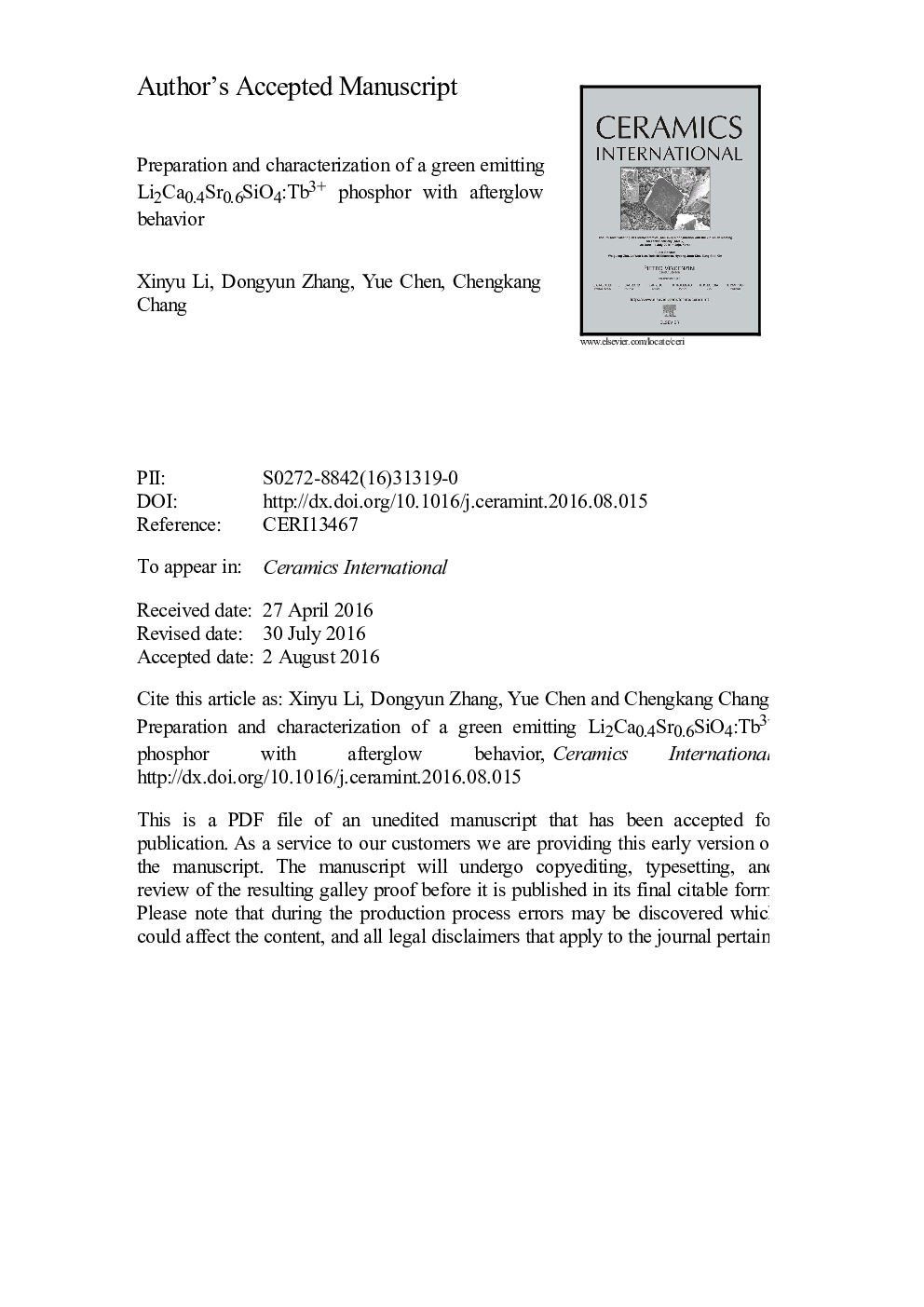| Article ID | Journal | Published Year | Pages | File Type |
|---|---|---|---|---|
| 5438209 | Ceramics International | 2017 | 16 Pages |
Abstract
A novel green emitting long afterglow phosphor Li2Ca0.4Sr0.6SiO4:Tb3+ was obtained via a high temperature solid-state reaction in air atmosphere. X-ray diffraction (XRD), photoluminescence spectroscope (PLS), long afterglow spectroscope (LAS) and thermal luminescence spectroscope (TLS) were performed to characterize the physical properties of the phosphors. Typical 5D4-7Fj transitions of Tb3+ ions were detected by PL spectra, corresponding to CIE chromaticity coordinates of x =0.3456, y =0.5745. An optimal concentration of Tb3+ in the substrate was determined as 0.8Â at%. The Li2Ca0.4Sr0.6SiO4 phosphors showed a typical afterglow behavior when the UV source was switched off. A typical triple exponential decay behavior was confirmed after fitting the experimental data. Thermal simulated luminescence study further indicated that the afterglow behavior of Li2Ca0.4Sr0.6SiO4:Tb3+ phosphors was generated by the recombination of electrons with the holes resulted from the doping of rare-earth ions (Tb3+) in Li2Ca0.4Sr0.6SiO4 host. The long afterglow luminescence mechanism of Li2Ca0.4Sr0.6SiO4:Tb3+ is illustrated and discussed in detail on the basis of experimental results.
Related Topics
Physical Sciences and Engineering
Materials Science
Ceramics and Composites
Authors
Xinyu Li, Dongyun Zhang, Yue Chen, Chengkang Chang,
